Traveling Through the Most Forbidden Land in the Sahara
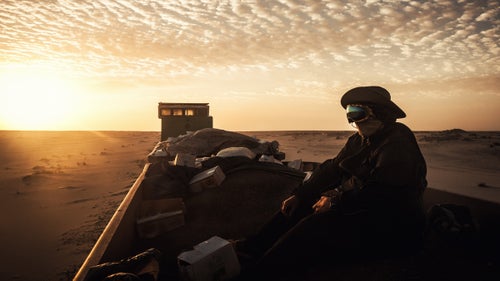
is a UK software developer with a knack for photography and a penchant for visiting places most tourists wouldn’t touch. The Saharan country of Mauritania certainly qualifies as one such place. If you were to read for the Islamic Republic of Mauritania, well, you wouldn’t go. Hazards include being murdered, kidnapped, robbed, and contracting Ebola. The country is also nearly impossible to access. “The rules for entering the country constantly change—we got our visas on whim at the airport in the capital city, Nouakchott, and virtually no paperwork was needed. But a couple of weeks earlier you could only get a visa in a consulate or embassy,” Huniewicz says.
Despite all of those hindrances, Huniewicz and his friend, Ammar, set out on a trip through Mauritania last year. Here, Huniewicz shares a few of his favorite encounters, experiences, and images including a wild ride on the world’s longest cargo train, taking shelter in an oasis, and encountering Berber cameleers.
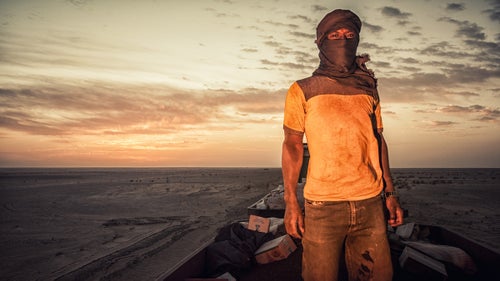
The highlight of the trip was riding one of the longest trains in the world across the Sahara. The Mauritania Railway train is a 1.8-mile long beast transporting iron ore—the bedrock of Mauritanian economy—from an inland plant to the coast 437 miles away. Anyone can just hop on and travel on it for free.
With the most extreme temperature change from day to night I have ever experienced, we had to dig holes in the iron ore, against the edges of the wagon to sleep in overnight to stay warm. It was freezing and we stuffed dirty clothes into our shirts and jackets trying to stay warm. Over roughly 14 hours aboard the train, we covered 286 miles.
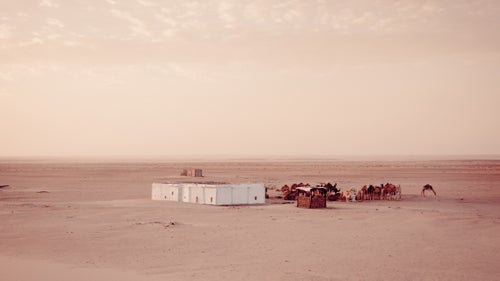
The land along the tracks is mostly barren and desolate and inaccessible to the north due to Western Saharan landmines. The Sahara is more diverse than I expected, and the landscape changes rather often. Still, there is almost no water. The closest sign we witnessed was a dried up lake bed covered in salt.

The dark spots and dots throughout this image are not a purposeful effect, they are signs of dust and sand on my camera’s sensor. Between the harsh light and never-ending flurry of sand, the Sahara provided some of the most difficult photography conditions I’ve ever experienced. This lens was shortly retired and rendered useless after our journey.
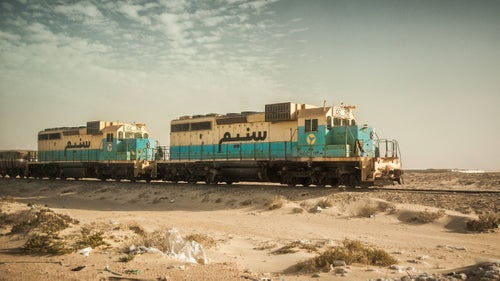
Fourteen hours after boarding the train we made it to the coast of the Atlantic in the city of Nouadhibou by the Tropic of Cancer. The Mauritanian train stops pretty much in the middle of nowhere, with not much but packs of taxi drivers awaiting the passengers. The delicious, fresh smell of the ocean was in the air, and completely oblivious to how dirty we were, we decided to stay for the night in the best hotel the city had to offer.
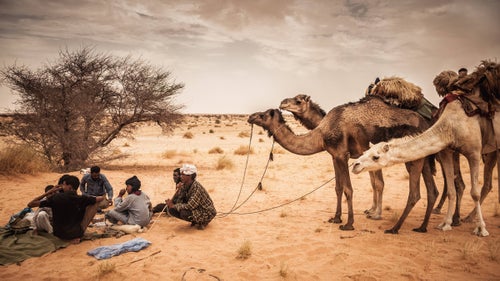
Bridging the Maghreb and Sub-Saharan Africa, Mauritania was once a fairly bustling area, with busy caravan routes between Morocco and Timbuktu, transporting salt, gold, and slaves. It was the cradle of the Almoravid dynasty—short-lived, but ruling the fairly vast lands from Mauritania to Islamic Spain, with its headquarters in Marrakesh, a city they founded. Later, it became a forgotten and neglected French colony, and therefore many of its citizens still speak French.
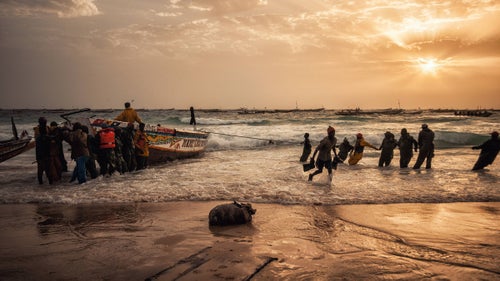
This is Port de Pêche, or Fishermen’s Beach, in Nouakchott, the capital city of Mauritania. It’s where local people are able to catch fish, but only ones rejected by the Japanese, Korean, and Chinese factory ships beyond the horizon.
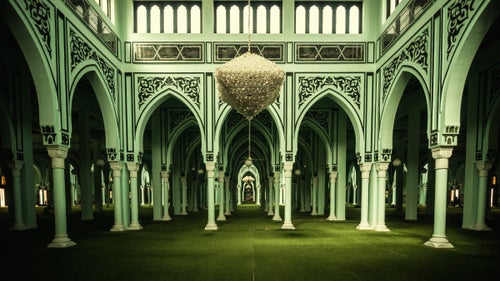
The skyline of Nouakchott, is dominated by Mosque Saudique. With birds singing outside, its Garden of Eden-like interior offers a calm and cool refuge on hot days.
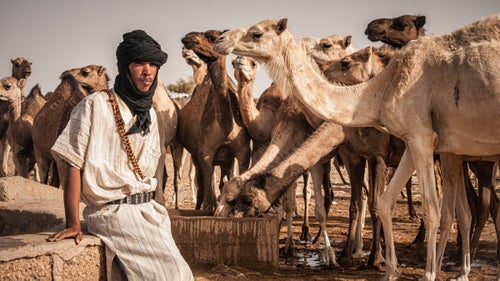
The days of the caravans are not entirely over. One can still see plenty of camels in the Sahara. During our travels to the —also known as Guelb er Richat—we stumbled upon a well on our way. At 98-feet deep, it was a vital source of water and our cameleer explained that is was cared for by the entire community and not owned by any one person.
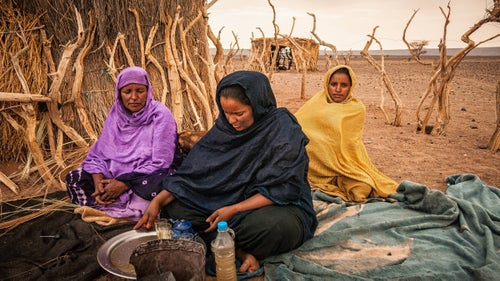
The Eye of the Sahara is a mysterious rock structure of unknown origin, possibly caused by an asteroid impact, or a geologic dome. It took us half of a day to reach it, but we were rewarded with a cup of tea from these women, who showed us selfless hospitality.